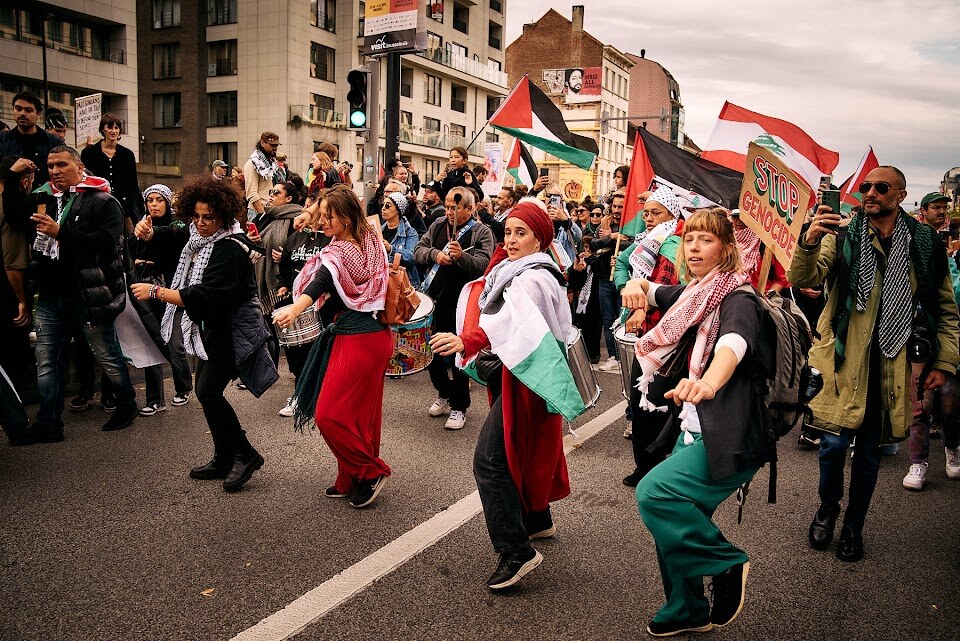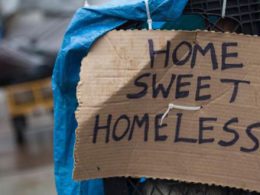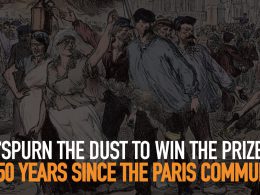By Serge Jordan
For more than a year, the world has been watching in horror in real-time as the Gaza Strip has been enduring one of the most destructive and merciless bombing campaigns in history—an unrelenting assault of genocidal proportions. Yet the machinery of death and destruction wielded by the Israeli State not only grinds on; it is plunging into new, unspeakable depths, while expanding its regional scope, driving the Middle East on the edge of what could be the biggest regional conflagration in decades.
Horrors without end
According to the official death toll released by Gaza’s health ministry, Israel’s genocide in Gaza has killed over 43,000 Palestinians in 12 months. However, this figure likely represents a very drastic undercount. Many thousands remain missing and are not reflected in these official statistics. The obliteration of healthcare facilities, communication networks, and road infrastructure has severely hampered accurate record-keeping. Neither this number accounts for the large and growing amount of casualties arising from indirect causes such as disease, malnutrition and starvation. Various organizations—including the World Health Organization, human rights groups, as well as healthcare professionals who have worked in Gaza—argue that the actual death toll is much higher than reported. A recent study by the ‘Costs of War Project’ at Brown University estimates it at around 114,000, representing about 5% of Gaza’s population—which they characterized as a “really solid, conservative minimum number of deaths” —while estimates from the scientific journal ‘The Lancet’ put the real death toll at more than 180,000 several months ago already.
Meanwhile, the occupied West Bank has also endured a surge in deadly Israeli military assaults and settler attacks over the past year, resulting in the detention of nearly 12,000 Palestinians and the killing of hundreds—among them 36 children killed in airstrikes and 129 shot with live ammunition, most struck in the head or upper body.
As horrifying as it is, the sheer number of deaths is only one part of the barbarism visited upon the Palestinian people. A new report on the socio-economic impact of the war by the UN’s Development Agency reveals that human development indicators in the Gaza Strip have collapsed to levels not seen since the 1950s, and that it would take 350 years (!) for the Gaza economy to return to the levels before 7 October 2023. Nearly all of Gaza’s population is suffering from high levels of food insecurity, half a million face starvation. Tens of thousands have sustained life-changing injuries; Gaza is now home to the largest number of amputee children in modern history, with 10 children on average losing 1 or both of their legs every day.
In what has marked yet a new level of horror and intensification of this brutal war of extermination —what Palestine’s UN envoy called a “genocide within a genocide”—, Northern Gaza has been subjected to a siege of staggering cruelty over the past three weeks (while the so-called “safe” or “humanitarian” areas in the southern parts of the Strip continue to be regularly bombed too). Israeli forces have choked the entry of food or aid of any kind into Northern Gaza since 1 October, and put the area under relentless air strikes and artillery shelling. The Israeli army has intensified its ground offensive —the third in twelve months— encircling the Jabalia refugee camp, killing hundreds of civilians and forcing tens of thousands to flee. Displaced families sheltering in public buildings are driven out at gunpoint, only for those buildings to be razed or burned by Israeli soldiers. Palestinians who fled have given chilling accounts of this ongoing campaign of murder, planned starvation and forced displacement: scores of bodies scattered through the streets, evidence of summary executions, the wounded left to bleed and die as ambulances and rescue efforts are deliberately blocked and even directly attacked. The Israeli army also targets what is left of water supplies and water pipes, pushing the remaining population closer to the edge of starvation and thirst. UN humanitarian chief Joyce Msuya warned on Saturday that “the entire population of north Gaza is at risk of dying under Israel’s siege”, one day after a major Israeli raid on Kamal Adwan, the last operational hospital in the area.
The head of the United Nations Relief and Works Agency (UNRWA), Philippe Lazzarini, recently described: “The smell of death is everywhere as bodies are left lying on the roads or under the rubble. Missions to clear the bodies or provide humanitarian assistance are denied. In northern Gaza, people are just waiting to die. They feel deserted, hopeless, and alone. They live from one hour to the next, fearing death at every second.” Despite these unbearable conditions and the looming threat of annihilation, many Palestinians simply cannot leave —or refuse to do so, as they know that once they leave, they may never return—an experience etched into their history.
This Israeli military strategy appears to be inspired by the core tenets of the so-called “Generals’ Plan,” a blueprint released in September by an association of Israeli retired officers and reservists, which Prime Minister Netanyahu remarked “makes sense.” The plan’s key objectives are to militarily encircle Northern Gaza, cut off humanitarian aid, and use starvation as a leverage to force a full evacuation of the area. Any Palestinian who remains behind would be labeled a Hamas operative and treated as a legitimate target for killing. Known also as “Eiland’s Plan,” it is named after Giora Eiland, a retired major general and former head of Israel’s National Security Council, who conceived its framework and summarized his brutal rationale already a year ago in an interview, stating: “Gaza must be completely destroyed: terrible chaos, severe humanitarian crisis, cries to heaven…”. This is accompanied by the plans of the settler-movement and Israeli far-right to resettle Gaza, openly discussed at a conference on 21 October attended by Knesset and several Likud members as well as government ministers, and protected by the army and police.
However, the practical feasibility of a plan to subject about 400,000 people to the gruesome ultimatum of “leave or die” is another matter entirely. Besides the unyielding attachment of the Palestinians to their land, it is questionable how long the Israeli occupying forces can maintain their grip on northern Gaza without incurring mounting casualties from Hamas and other Palestinian armed groups which continue to operate in the area. The Israeli army also faces rising military, logistic and human constraints in sustaining operations within Gaza given the simultaneous demands of its intensifying war with Lebanon —which requires significant troop deployments— as well as the potential for the war to escalate further afield.
Onslaught expands in Lebanon
Despite public claims to the contrary, over a year into the war Netanyahu’s government has still not achieved any of its stated objectives in Gaza. For instance, less than 7% of the freed Israeli hostages were recovered by military force. The Israeli establishment’s triumphalist celebrations of the assassinations of Hamas leaders Ismail Haniyeh and more recently Yahya Sinwar cannot obscure the reality that Hamas, while having experienced significant military losses in men and material, is far from “eliminated”. The assertion from Israeli Defense Minister Yoav Gallant that Hamas is effectively dismantled as a fighting force in Gaza —echoed last week by US Secretary of State Antony Blinken— does not align with the facts. Besides this narrative plainly contradicting Israeli State propaganda which continues to blame Hamas for virtually all the Palestinian civilians massacred by the IDF’s bombs, the group objectively retains a capability and willingness to fight. In a context virtually devoid of left-wing resistance forces, the Israeli regime’s spiral of atrocities will also likely help Hamas replenish its ranks among a new generation of Palestinians. Politically, results of the latest poll conducted by the Palestinian Center for Policy and Survey Research in early September show that while support for Hamas has dropped moderately, it remains the highest compared to all other Palestinian factions in both Gaza and the occupied West Bank.
Confronted with a strategic deadlock, Netanyahu found himself under pressure from the most extremist, ultra-nationalist factions within his own cabinet to escalate the war further. He was also desperate to deflect from his own political vulnerabilities and mounting domestic criticisms for his conduct of the war. These culminated, in early September, in historic protests across Israel and a short-lived general strike called by the Histadrut union federation giving in to massive pressure from below —in which workers of Jewish, Arab and other backgrounds participated, demanding a “deal now”.
Encouraged by the factors above, and sensing an opportunity in the evident weakness of the current Biden administration, Netanyahu opted for a reckless headlong rush, slamming the war accelerator in Lebanon. The State-terrorist, deadly detonation of booby-trapped pagers and communication devices across Lebanon in mid-September merely served as a prelude to ‘Arrows of the North’, a wider brutal Israeli military air and ground offensive on Lebanon. The Israeli regime’s assertions that this new onslaught is aimed at Hezbollah alone are demonstrably false. It has indiscriminately attacked hospitals, residential areas, border crossings, Red Cross and civil defence teams, farmers, shepherds, journalists, and even UN ‘peacekeeping’ forces. Critical infrastructure—water, electricity, communications—has been deliberately targeted, along with government buildings, cultural landmarks, and historical sites. The offensive has killed over 2,600 people so far and displaced around 1.2 million, forcing more than one in five of Lebanon’s population from their homes.
In part, the Israeli army’s onslaught in Lebanon seems to be banked on the idea of terrorizing and undermining Hezbollah’s social base of support. Fanning sectarian flames among the people of Lebanon might well be an intended part of this strategy, as predominantly Shi’a Lebanese are compelled to flee from the south into mostly Sunni, Druze and Christian areas. For instance, in mid-October the Israeli military struck the small northern village of Aito in the country’s Christian heartland, far from Hezbollah’s main areas of influence in Lebanon’s south and east —but where internally displaced people coming from majority Shi’a areas were being welcomed. Twenty-two people were killed in the bombing.
The assassination of high-profile and longstanding Hezbollah leader Hassan Nasrallah at the end of September, along with the elimination of most of the organisation’s top military commanders, undoubtedly dealt a blow to Hezbollah. These actions, alongside the ‘pagers and walkie-talkies attacks’, have also exposed serious security breaches within the group’s structure. Politically, they provided a ‘prestige shot’ for Netanyahu, allowing him to temporarily lift his domestic standing. His Likud party climbed back from record lows to lead national opinion polls.
However, limits to this trend are already visible. Recent polling also shows that a majority of the population in Israel wants an early vote —and that Netanyahu’s coalition would be unable to form a government in hypothetical elections, with one of the two far-right coalition partners facing the complete loss of its parliamentary seats. And on the battlefield, Hezbollah remains a formidable adversary. Compared to its 2006 war with Israel, the organization has dramatically enhanced its combat capabilities, largely through years of experience fighting alongside the reactionary Assad’s regime forces in Syria. Hezbollah boasts a vast arsenal of precision-guided missiles and rockets; although parts of that arsenal has been degraded in recent Israeli airstrikes, it is still capable of hitting nearly any target within Israel —as was underscored recently with a drone strike targeting Netanyahu’s own luxurious private villa in the coastal town of Caesarea. Additionally, the group can draw on tens of thousands of seasoned fighters hardened by prolonged warfare. Although media reports differ on the precise number of Israeli military casualties in Lebanon, there is broad agreement that losses in recent days have been the heaviest yet inflicted by Hezbollah, which is putting a fierce fight on the ground —while raining down rocket fire across the border, some resulting in civilian deaths. The IDF’s initial, declared idea of a “focused and limited operation” in Lebanon could easily devolve into its opposite.
Any belief that Israel has opened this new front —at the expense of the people of Lebanon— to ensure lasting “security” and “peace” to its own population is a cruel delusion that will soon collapse under the weight of reality. This is to say nothing of the burden that war and spiraling military spending place on Israel’s economy, which, as ‘The Hindu’ noted, “forces tough choices between social programs and the military”. This will exacerbate social tensions and deepen the contradictions within Israeli society.
Israeli army bombs Iran
Tragically, the full destructive potential of this conflict could yet unfold, as the dynamic now embarked upon risks dragging it into something far greater. What the Israeli regime sought but failed to secure via the Abraham Accords —namely, a long term shift in the regional balance of forces in its favor vis-à-vis Iran and Iran-backed groups, alongside the sidelining of the Palestinian question and normalisation and strengthening of its occupation regime— it is now trying to achieve through a campaign of death and destruction. This logic leads Netanyahu’s government on the road to a confrontation with Tehran.
As the genocidal government in Tel Aviv has multiplied its provocations all around —it has bombed Yemen, Syria, Lebanon and Gaza all within around 24h in September— the Iranian regime has sought to maintain a strategy of ‘controlled’ and ‘calculated’ escalation, walking a fine line between posturing as a key frontliner in the “axis of resistance” against the Israeli regime while consciously avoiding actions that could trigger a full-scale war. This caution arises not from a place of strength, but from a fear of the political, social, economic, and military fallout such a scenario would bring, especially as it has faced periodic eruptions of mass internal discontent in recent years. Yet, Iran’s launch of 200 ballistic missilesinto Israel in the wake of Nasrallah’s assassination, which killed one civilian (a Palestinian man in the West Bank city of Jericho), was immediately exploited by Israeli officials as a pretext for threatening punitive retaliation. In the aftermath, the Pentagon dispatched its most advanced anti-missile defense system to Israel, accompanied by around 100 personnel to operate it. This marked the first formal deployment of U.S. ‘boots on the ground’ since the onset of the genocide in Gaza, and an “operational example of the United States’ ironclad support to the defense of Israel”, according to U.S. Secretary of Defense Lloyd J Austin.
Framed as a defensive measure, the Israeli attack, orchestrated in tandem with Washington, came on October 26 and practically represented an escalatory offensive. It targeted Iranian missile and drone manufacturing sites, along with aerial defenses. Although nuclear and oil facilities—targets publicly objected to by the Biden administration—were spared, it remains uncertain whether further strikes will follow. Even on its own, this first openly acknowledged Israeli military assault on Iran does carry the perilous potential to spark a broader chain reaction.
Imperialism’s Dance of Hypocrisy
The White House’s timid attempts to put its foot down to avoid an all-out conflict with Iran by arguing for relatively ‘limited’ airstrikes, combined with its renewed emphasis on the need for a ceasefire in the wake of Yahya Sinwar’s killing, poorly conceals the instrumental role U.S. imperialism has played throughout the past year in the lead-up to this combustible situation and in materially, politically, and diplomatically enabling the genocide in Gaza. New data from Al Jazeera’s monitoring agency, Sanad, exposes the staggering extent of American and British involvement in Israel’s military operations between October 2023 and October 2024. It documents no fewer than 6,000 military flights over the region—an average of 16 per day—including 1,200 cargo flights delivering weapons to Israel, along with reconnaissance missions, air-to-air refueling, and other support.
Nevertheless, the Biden administration’s purported ‘constraints’ on Israel’s attack on Iran, its capitalisation on Sinwar’s death to make a renewed case for a ceasefire —despite the Israeli Prime Minister making ostentatiously clear he didn’t see it that way— as well as its —largely inconsequential— threats of freezing military aid if the Israeli regime didn’t lift restrictions on humanitarian aid into Gaza within 30 days, all betray real anxieties amongst leading U.S. circles. These half-hearted efforts to rein in Netanyahu’s most extreme war maneuvers are motivated not by moral considerations, but by the mass public outrage and backlash against the Israeli regime’s actions, cynical electoral calculations (a recent poll showed that Arab US-Americans slightly favor Trump over Harris) and by the specter of a much greater destabilisation of the region. Washington is certainly wary of becoming entangled in a full-scale war with Iran, knowing it could further inflame anti-U.S. sentiment and wreak havoc on the oil markets and the global economy at large. Preoccupied with its intensifying strategic rivalry with China, the U.S. political establishment—Democrats and Republicans alike— would rather reduce its footprint in the Middle East than deepen it further. However, paradoxically, if such a conflict were to erupt, U.S. imperialism would likely shift into reactive mode, compelled to scale up its support to the Israeli regime out of fear that any display of weakness might embolden regional and global rivals. In the context of the ‘New Cold War’ (i.e., the battle for world hegemony between the two main superpowers U.S. and China), whichever President occupying the White House would indeed objectively favor a weakening of Iran and the imperialist powers associated with it, China and Russia.
In any event, the current gestures of the U.S. administration do not signal any meaningful shift in U.S. policy. Washington’s support for Israel remains deeply rooted in geostrategic imperatives, which cannot be altered by rhetoric alone. Only large-scale movements from below, including major developments of the class struggle, could exert the mass pressure required to disrupt this entrenched alliance.
As it is, while Biden may occasionally express that there are too many civilian casualties, he continues to arm Israel to the teeth. Similarly, British Prime Minister Keir Starmer claims that “the world will not tolerate excuses from Israel anymore” —the same Starmer who once justified Israel’s right to cut off Gaza’s water and electricity. Canadian Prime Minister Justin Trudeau lashes out at the Indian regime of Narendra Modi for its extrajudicial killings on foreign land, but remains complicitly silent when Israel carries out similar actions in Gaza, Lebanon, or Iran. Modi, for his part, speaks of “peace diplomacy” while backing Netanyahu’s government through arms deals involving Indian companies, facilitating the sending of Indian workers to Israel and abstaining on UN resolutions calling for a ceasefire or condemning Israel’s occupation and war crimes. Turkish President Erdoğan may rail against Israel’s bombings, yet in the same week, orders over 40 airstrikes on northern and eastern Syria killing scores of civilians. As for Macron, a former French official quoted in Politico describes his wavering approach, “When he is talking to emerging countries, he is pro-Palestinian; and when he talks to Netanyahu, he’s all about the security of Israel.” His recent shift towards a more strongly worded rhetoric against some of Netanyahu’s policies appears to coincide with Israel’s invasion of Lebanon, a country that French imperialism continues to view as part of its preserved backyard.
This brazen hypocrisy lays bare the moral bankruptcy of global capitalist leaders of all stripes. Their selective outrage reveals that condemnations of violence are nothing more than tools of convenience while the slaughter continues. An end to this slaughter will not come from the halls of power but from widespread and organized resistance on an international scale, forcing a rupture in the system that enables and facilitates these crimes.
Stop the Genocide, stop the Israeli State’s death machine — Fight the whole system through mass action
The Palestinian people, along with all workers and oppressed living in Lebanon and the wider region, need our steadfast solidarity. We must call for the immediate cessation of the Israeli regime’s bloody rampage across the region and the total withdrawal of its occupying forces from Lebanon, Gaza, and the occupied West Bank. The U.S. and most Western leaders argue for a ceasefire centered around the release of the Israeli hostages still held in Gaza. Yet not only they remain indifferent to the fate of the thousands of Palestinian prisoners languishing in Israeli jails; they have thrown their support behind Netanyahu’s war cabinet who has methodically sabotaged every opportunity for a ceasefire while callously exploiting the hostages’ plight to ramp up its bloody agenda. The recent heckling of Netanyahu by bereaved families of hostages during his speech at a commemoration rally for the October 7 victims in Jerusalem is a sure sign of growing public outrage over these cynical maneuvers.
It is evident that no genuine and lasting ceasefire can take place under conditions of siege and military occupation. As it is, we defend the inalienable right of the masses in Lebanon and in the Occupied Palestinian Territories to resist Israel’s ongoing military aggression, including by the arms. An armed resistance resting on mass foundations and bound by the democratic control of the population, seeking to unite workers and oppressed people across the diverse confessions and national communities, and integrating demands for national liberation with demands for radical economic and social transformation, would be the best way to achieve this.
The resistance against this genocide must target its fundamental roots. This means waging an uncompromising political struggle not only against the Israeli State’s colonialism and racism but also against the capitalist and imperialist system that upholds them. This struggle must go hand-in-hand with the building of independent socialist organizations capable of organising the working class and all the oppressed around such an agenda. It must chart a course away from the capitulations of corrupt pro-capitalist parties like Fatah, but also from right-wing Islamist forces like Hamas and Hezbollah. While in the current conditions, these forces command significant support, socialists must address the root causes of national oppression without succumbing to reactionary political methods that ultimately serve to entrench existing power relations. There cannot be liberation for some without liberation for all: to be successful, the struggle must be anti-sectarian, internationalist, feminist, anti-imperialist, anti-capitalist, and prioritize mass democratic participation —all qualities that these organizations unfortunately lack. Moreover, their indiscriminate attacks on Israeli civilians and collaboration with the despotic Iranian regime —the same regime that brutally crushed the ‘Woman, Life, Freedom’ movement—help reinforce the blood-soaked propaganda of Netanyahu and the gang of butchers who rain terror upon Gaza and Lebanon.
Our struggle must target not only the military onslaught of the Israeli State but all its global enablers, all the imperialist powers whose vested interests are an integral part to the bloodshed now engulfing the Middle East, and all authoritarian and oppressive regimes in the region —including Iran and Turkey— who care more for their own wealth and political survival than for the fate of the Palestinians.

Together, the effective complicity of the Arab regimes in allowing Israel’s barbarous actions in Gaza and their perpetuation of state violence and misery at home, could fuel a potent mix with the potential to ignite new uprisings across the region. In October the Egyptian regime of al-Sissi increased fuel prices for the third time this year as part of broader ‘structural reforms’ imposed at the behest of the IMF —after slashing bread subsidies in June. These policies only deepen the anger among a population already suffering from severe economic hardships, all while witnessing their government acting as a de facto facilitator of the strangulation of the Palestinian people. “The second Arab Spring is coming, no question, all the drivers are still there: poverty, corruption, unemployment, political blockage and tyranny,” said Oraib Al Rantawi, director of the Amman-based Al-Quds Center for Political Studies. Although the streets of the Middle East and North Africa may currently seem dominated by feelings of demoralization and helplessness, the horrific events unfolding in Gaza and Lebanon continue to act as a catalyst for a molecular but steady accumulation of mass rage and radicalization—one that could erupt in the most explosive manner and, if organised effectively, become a powerful leverage to halt the spiraling death machine of the Israeli regime and its imperialist supporters.
Meanwhile, across the globe, albeit with fluctuations and varying degrees of intensity, millions of people have risen in defiance, demonstrating, boycotting, striking, occupying. Actions by university students and workers—sometimes bolstered by trade union support, including through strike action as with the United Automobile Workers (UAW) in the U.S.—have called for universities to sever all ties with the Israeli state. These actions have further exposed the lies of the ruling class —who generally responded with violent police repression against the encampments—, and popularized the question of democratic control by students and workers over the running and use of finances of their universities.
In London alone, 300,000 people flooded the streets in the wake of the invasion of Lebanon. At the end of September, a 24-hour general strike “against the genocide and the occupation in Palestine” was organised in the Spanish state at the call of more than 200 trade unions and NGOs, accompanied by mass protests across the country. This is the path forward: to achieve the most tangible results, we must strike at the heart of the war profiteers and imperialist states, targeting their functionality and profits, and breathe new life into the original call from Palestinian trade unions to the global labor movement urging solidarity against the genocide in Gaza —and now the onslaught on Lebanon and further regional war escalation.
From the Greek dockworkers recently blocking arms shipments to Israel, to Google and Microsoft workers revolting against their company’s partnership with the Israeli government and army, to hospital workers in Paris protesting in solidarity with their counterparts under blockade in Gaza, to ‘Stop Arming Israel’ French activists leafletting at several French arms factories that support the Israeli genocide to forge connections with the workers of the industry, to the public calls by the French unions CGT STMicroelectronics and CGT Thales for their respective companies to stop doing business with Israel…these myriad acts of solidarity by the working class must be amplified everywhere possible, most especially in strategic sectors that are central to the operation of the Israeli war machine. As inspiring as these actions are, much more could and must be done indeed by trade unions and workers’ organisations worldwide to actively mobilize their members, expose their governments’ complicity in the ongoing atrocities, and unleash the full power of the working class through bold, coordinated mass action.
This struggle must also extend to workers and young people within the Israeli state, urging them to use their power and leverage their labour to clog the war machine, and confront what is objectively —even if not yet consciously recognized— a common enemy. We welcome and stand in full solidarity with all those within the Green Line who are taking bold steps to oppose Netanyahu’s regime and the entire spectrum of political forces backing this war of extermination on the Palestinians.
Incontestably, major contradictions complicate this process. For instance, the short general strike of 2 September happened not because of but in spite of the Histadrut’s leadership, whose right-wing nationalist chairman Bar-David, in December 2023, disgustingly signed a shell to be used to bomb the Gaza strip with the inscription: “The people of Israel live. Greetings from the Histadrut and the workers in Israel”. The strike was also supported by parts of the Israeli capitalist class, for their own interests. As for the “Deal now” movement, it has reflected a deeply conflicted and contradictory consciousness, and its support has been significantly undercut by the onslaught on Lebanon. Notwithstanding these challenges, both the strike and “Deal now” protests have revealed a glimpse of the role Israeli working-class people could play within the Green Line to assist the struggle against the genocide in Gaza, the war on Lebanon, settler and military violence in the occupied West Bank, as well as the politics of the Israeli regime generally. It is a vital task of socialists to actively foster this process, and to unmask the deceptive rhetoric of security and self-defense that the Israeli ruling class exploits to disguise an agenda that only leads to greater insecurity, austerity, and bloodshed for all involved.
Ultimately, the struggle for Palestinian liberation is inseparable from the broader global fight against capitalism—a system driven by private profit that breeds wars, ecological devastation, and obscene inequality. Under this system, humanity’s most advanced technologies are harnessed not to uplift life but to annihilate it on a genocidal scale, while the most advanced devices allow the live-streaming of the most primitive and dehumanizing acts of violence to millions of people. The urgency of revolutionary transformation has never been clearer. Overthrowing this destructive system is essential to reclaim society’s immense wealth and resources, including those now funneled into the mass slaughter and ruin of Gaza. Only through a socialist program striving for collective ownership and control, and championing the rights of all national and religious communities to full equality and self-determination, can we lay the foundations for a future where peace, safety, and prosperity are guaranteed for all people.












